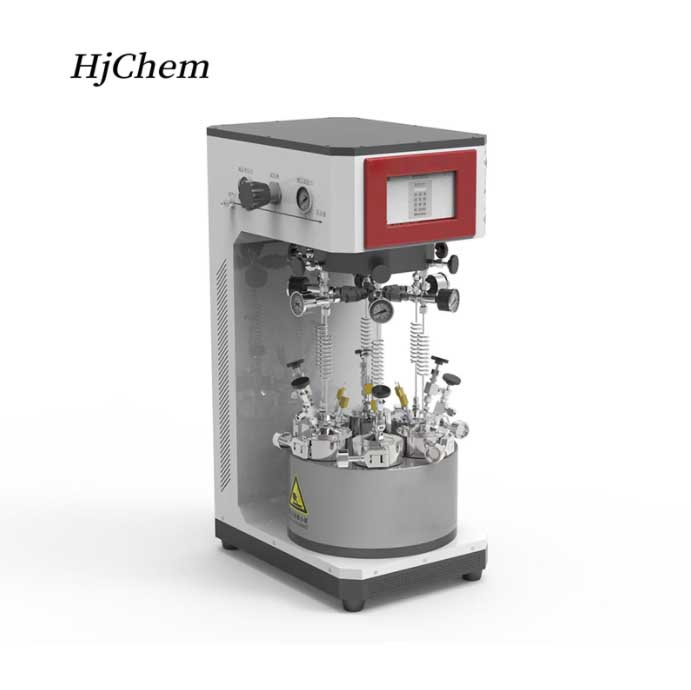Parallel High Pressure Reactor: A system comprising multiple individual high-pressure reaction vessels operating simultaneously under identical or independently controlled high-pressure conditions.
This core concept highlights the concurrency and pressure capability.
Basic Technical Specifications:
1. The number of parallel reaction vessels can be customized, 2/4/6/8/12...
2. Volume: 10/25/50/100/250/500ml (customizable)
3. Material: 316L (other special materials customizable)
4. Structure: Flange/Quick-Opening/One-button quick-opening type
5. Heating method: electrical heating/oil heating.
6. Temperature: RT-300°C (customizable)
7. Pressure: -0.1-10MPa (customizable)
8. Agitation Method: mechnical stirring/magnetic stirring
9. Valves: Two 1/4″ ferrule valve
10. Power Supply: AC220V, 50HZ/60HZ
11. Control: Touch screen control
Expandable Functions:
1. Isobaric Feeding: Add liquid reactants during reaction (controlled total volume)
2. High-Pressure Feed Pump: Introduce liquid reactants during reaction (precise flow rate control)
3. Gas Mass Flow Meter: Accurately measure cumulative gas flow and instantaneous flow rate
4. Built-in Cooling Coil: Enables rapid internal reactor cooling
5. Condenser: Provides condensation reflux or solvent recovery functionality
Key Advantages Over Single Reactors
1. Dramatically Increased Throughput: Run 2, 4, 6, 8, or more experiments simultaneously in a single system. Achieve in days what takes weeks or months with single reactors. Ideal for:
1.1 High-throughput screening (HTS) of catalysts, reaction conditions, or materials.
1.2 Accelerated process development and optimization.
1.3 Parallel synthesis of compound libraries.
1.4 Reproducibility testing under identical conditions.
2. Enhanced Experimental Consistency: Subject all vessels to the same precise temperature, pressure, and stirring profiles (or defined gradients), ensuring unparalleled comparability between experiments. Eliminates run-to-run variability inherent in sequential testing with a single reactor.
3. Optimized Resource Utilization: Save valuable lab space, reduce overall equipment costs compared to purchasing multiple individual reactors, and maximize researcher productivity by managing multiple reactions at once.
4. Reduced Time-to-Results: Significantly shorten research cycles and development timelines by generating multiple data points concurrently.
5. Scalable Data Generation: Obtain statistically relevant data faster, enabling more confident decision-making in process scale-up or material selection.
For more information, please visit us:
https://njhjchem.com/product/high-pressure-reactors/custom-parallel-high-pressure-batch-synthesis-reactor/
bio-equip.cn




